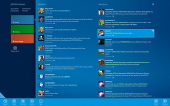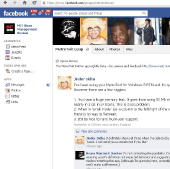Using Facebook Helps Customers Solve Problems
MetroTwit is a tool that helps Twitter users track their Twitter feeds, see several columns at a time and easily tweet, reply or retweet. MetroTwit’s managers use Facebook to talk to customers and let them help each other with questions.
Social Business

MetroTwit is a tool that helps Twitter users track their Twitter feeds, see several columns at a time and easily tweet, reply or retweet. MetroTwit’s managers use Facebook to talk to customers and let them help each other with questions.
Twitter client MetroTwit is using social tools to improve its “Help” function. More specifically, in 2010 the firm launched a standalone Facebook group to serve as a friendly virtual place where MetroTwit users can post problems, share tips and be part of the larger MetroTwit user community.
If you’re not familiar with the concept of a Twitter client, these are pieces of software specifically designed to make using Twitter easier and more intuitive. MetroTwit’s own claim to fame is a particularly striking and elegant interface, which has been getting some positive buzz among technology review sites.
Product manager Long Zheng (@longzheng) told us that its Facebook help group started out as a low-cost forum for the firm’s software beta testers. “From the very beginning we saw the power of users helping other users,” says Zheng. “It was a natural transition to bringing this functionality to the rest of our user community. Whether discussing a problem or making a feature suggestion, it was usually other users who were first to respond before anyone from the official team did.”
Unlike other Web-based user tech-help sites, on Facebook everyone gets to see a bit more about everyone else, even if it just a picture, making the experience feel more personal. Zheng said, “Having an identifiable face and name attached with each user made it feel more friendly and approachable than a traditional support forum.”

MetroTwit’s Facebook user group has over 500 members who post problems and share tips.
Apart from its simple (and free) set-up, MetroTwit uses the Help function to identify user problems and user reactions to product features. If need be, a company rep can “jump in” to the group and provide help directly. MetroTwit also uses the Facebook group as a listening post to identify unmet needs for future releases, or to find out what kind of people are using the product to better target its marketing.
There are some drawbacks and cautions. Zheng told us that the biggest challenge has been the inability to “pin” or feature common Q&As, so a similar post would surface very few weeks. The ability to moderate discussions is also limited within the Facebook tool.
How do you measure success with an initiative like this? Zheng said MetroTwit has not made any direct comparisons, but that it “definitely helped us reduce the workload in support.”
While we believe that there are some intangible benefits that are not amenable to a direct measurement, you can and should still also try to determine the “metrics that matter” (see our forthcoming discussion with Deloitte Center for the Edge co-director John Hagel for more on this). In this case, you might take a look at how a Facebook group impacted important “help” type metrics such as time to problem resolution and customer satisfaction with how the product works.
Your thoughts?




